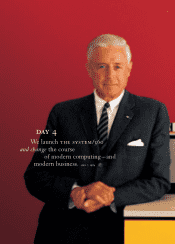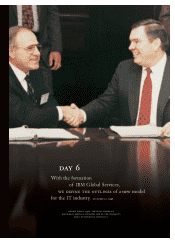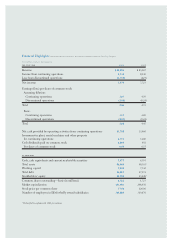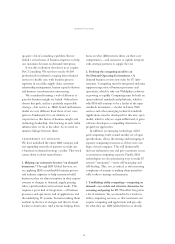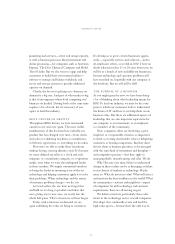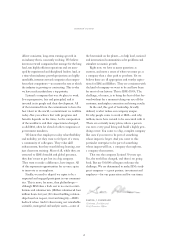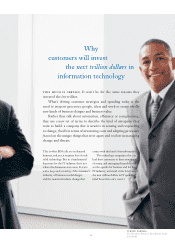IBM 2002 Annual Report Download - page 16
Download and view the complete annual report
Please find page 16 of the 2002 IBM annual report below. You can navigate through the pages in the report by either clicking on the pages listed below, or by using the keyword search tool below to find specific information within the annual report.
it would not have taken the market by storm if we
had only brought customers a new machine. We
had to bring them a new idea about business, and we
had to show them how to apply mainframe systems
to transform back-office functions like accounting,
payroll and inventory management.
I don’t think it’s an overstatement to say that
IBM has been unique in stepping to the forefront
of both these capabilities—computing and its
application to business—for most of IT’s history.
To day, once again, both are changing in significant
and interconnected ways.
Consider what’s happening in computing. Our
customers have stopped thinking of their technology
needs just in terms of data centers, or storage
systems, or PCs, or even the network. Today, it’s
the entire technical infrastructure on which their
businesses run, a vital infrastructure that must
connect with and support relationships and trans-
actions with other businesses, devices of all kinds
and all the people using those devices.
My point is, if customers are going to look to
you as the leader in computing, you have to be
able to drive forward the entire computing agenda,
not just a piece of it.
We see a parallel situation in how computing
is being applied by customers. For the most
part, businesses and institutions have automated
and digitized their standalone operations and
processes—the back office, the manufacturing
floor, procurement, logistics, customer-facing
systems. They’ve extracted great efficiencies by
doing so. Now they want to transform processes
that cut across all of those systems. Why? Because
they want to build a business that can respond
dynamically to whatever the world throws at it.
And goodness knows, the world has been doing
a lot of throwing lately.
a new game for business
All of this is what we mean by “e-business on
demand,” which you will be hearing a lot about
in the months and years to come. The promise
of on demand is that a company or institution
can provide products, services, information, health
care, education, government services and so
on—all “on demand” for customers, citizens,
patients and students. These “sense-and-respond”
or “real-time” enterprises enjoy enormous com-
petitive advantages. They are able to convert fixed
costs into variable costs. They can greatly reduce
inventories. And, most compellingly, they are
extremely responsive to the needs of their customers,
employees and partners.
That is obviously very appealing, especially in
times like these. However, consider the magnitude
of the business transformation it requires. It’s
almost as if a business were turned on its side—
moving from a collection of vertical “silos” to a
seamlessly integrated, horizontal flow across value
chains. That’s a major, major shift—in business
design and in management thinking—and pulling it
off requires deep business expertise and know-how.
This may sound rather grandiose, to some. And,
of course, all technology companies envision ways
in which their products will change business and
society. Most do so with great bravado. More often
than not, though, they are just plain wrong. The
dot-com era was just the latest reminder that creators
of databases, PCs and printers have no special
qualifications to understand the future of serious
business. In fact, they are probably the last people
customers should look to for this kind of insight.
To be honest, when we at IBM began to under-
stand the future course of technology and its
sweeping implications for business, we looked in
the mirror and saw some serious deficiencies in our
own company. True, we had in recent years built
chairman’s letter


